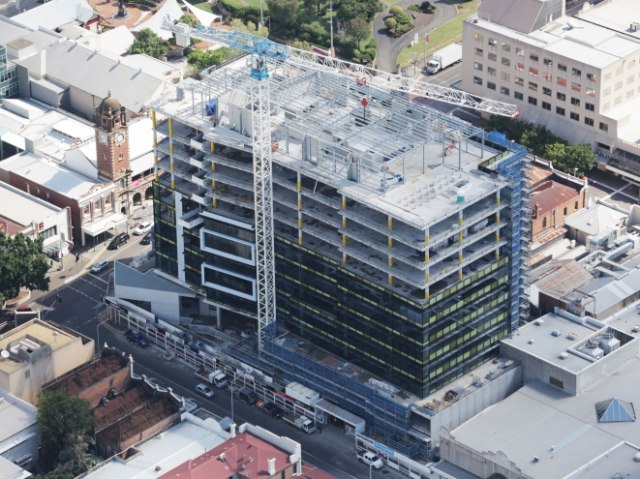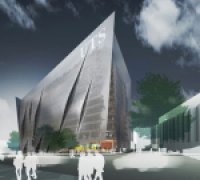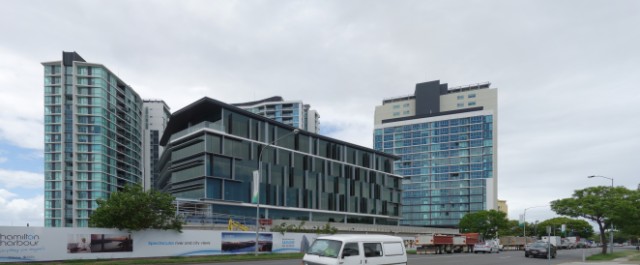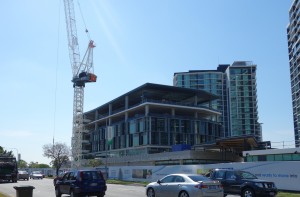
Brisbane, being the location of our Head Office, sees many fine examples of G.James workmanship. Here, we outline some of the biggest and best projects undertaken to showcase our capabilities in recent times.
The interactive map is designed so you can take a tour of some of our most recent and notable works. Either at your desk looking out a CBD window, taking a stroll around town, and driving past a building or through an area you have always wanted to know more about.
Brisbane
G.James has contributed widely to what Brisbane looks like today. There are buildings that have added to Brisbane’s sky line and to the diversity of looks and uses that are designed for the various parts of this fair city. On some buildings, there are unique features that make them distinctive. For example –
- the ribbons of M&A,
- the splash of red across the Australian Federal Police building,
- the glass wall of Sir Samuel Griffith Centre,
- the towering Aurora and Riparian plaza.
There are many buildings that have achieved the coveted green star energy efficient design, some interesting artwork on glass designed by local artists – its worth a visit to the Anthropology Museum at UQ to see the ceramic printed window alone. Some of the buildings have specialised glass systems to suit the works being done, like the Translational Research Institute and the ABC headquarters.
There are projects that have altered the face of a tired old façade, so if you look at an old image of QIMR, you won’t recognize it. And then theres the Suncorp Stadium which gives you a glimpse inside a place where state pride and competition is on the line.
The Interactive Map
The map is aimed to give you a glimpse into the depth the G.James knowledge base and provide an overview of the types of works that G.James is capable of. It highlights projects done by various departments in the company, including:
- Commercial departments
- Residential departments
- Gossi park and street furniture
- Glass department
You can have a look at the map and plan out a scenic drive, or target specific jobs, or just get an idea of what we have produced, in your area. As you can imagine, there are too many jobs to make this an all-inclusive list, but we aimed to include a range of jobs reflecting different styles and features.
A brief dossier on the project is included – a photo of what to look for, basic job data and links to further information on the project. G.James can help you with any further information required for the jobs represented.
Explore Here…
Enjoy the exploration, and keep an eye on this space. Other areas will be released as our database of projects rolls out – Sydney, Melbourne, the Gold Coast, as well as other areas to be where you can find G.James fingerprints…
Until then, enjoy this insight into the River City.
Key:
![]() G.James Projects
G.James Projects
![]() Gossi Designs
Gossi Designs
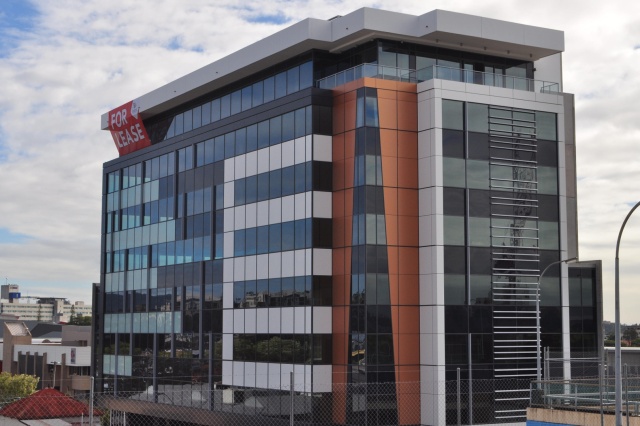 A green star accredited office block constructed in one of Brisbane’s growing commercial areas, 51 Alfred St comprises of a ground floor retail space with 8 levels of office space above.
A green star accredited office block constructed in one of Brisbane’s growing commercial areas, 51 Alfred St comprises of a ground floor retail space with 8 levels of office space above.















